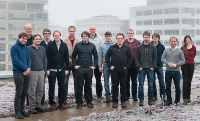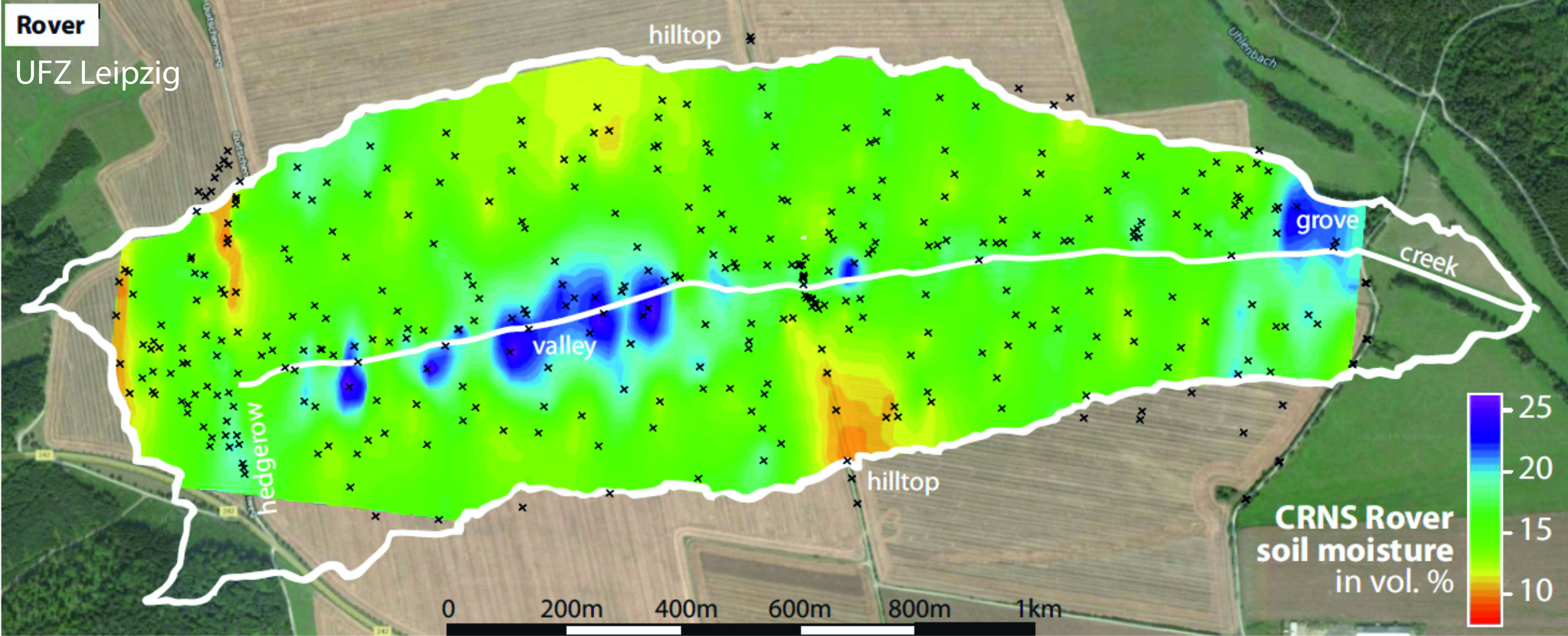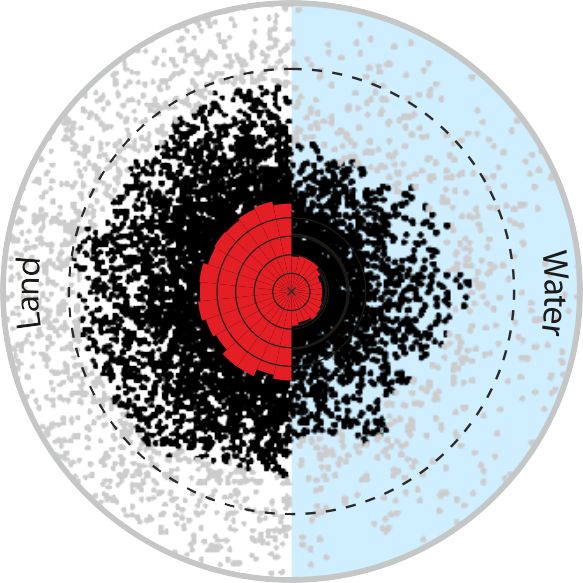Cosmic Ray Neutron Sensing
Measuring soil moisture non-invasively by cosmic-ray induced neutron
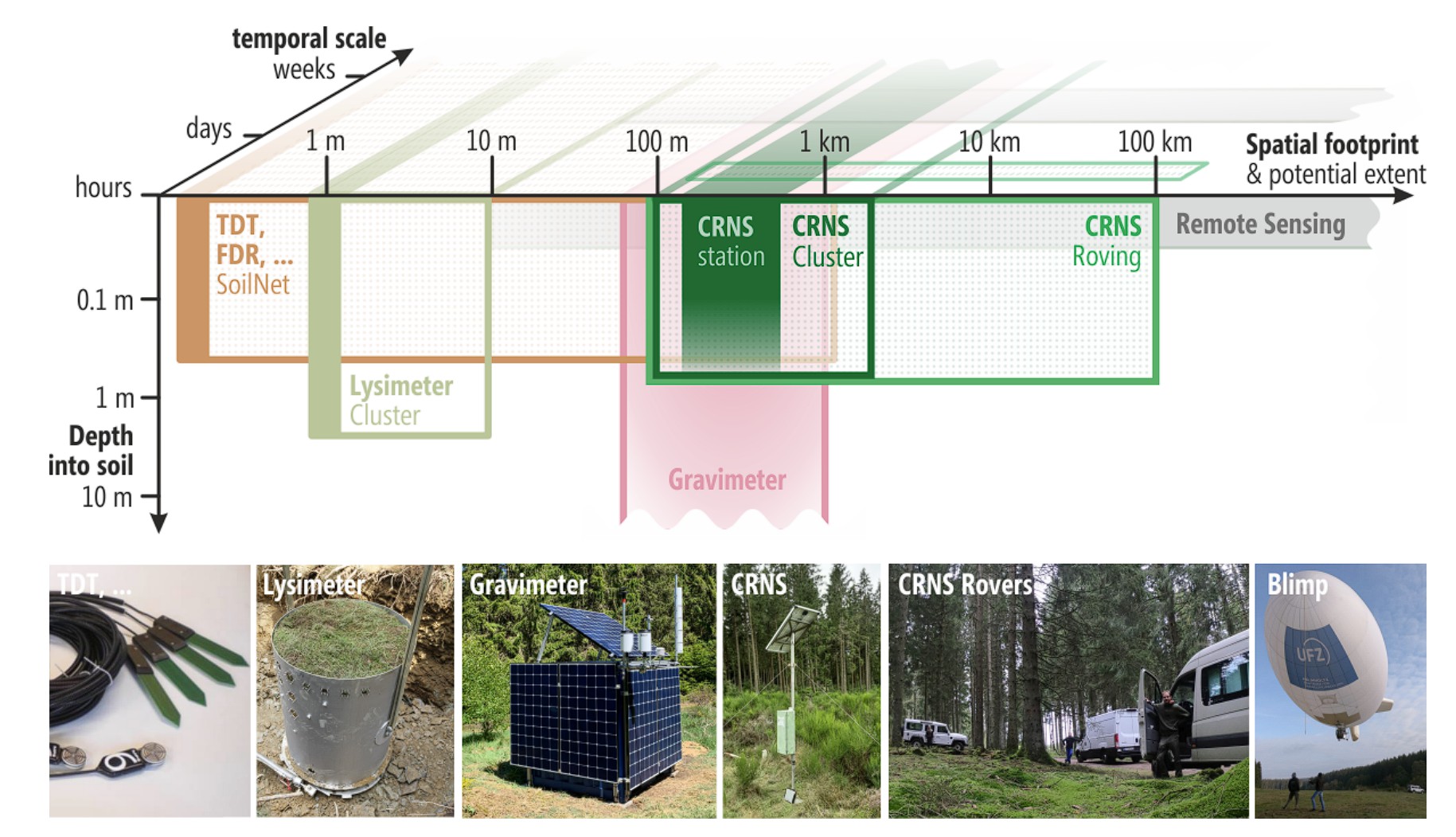
Comparison of different soil moisture sensing techniques.
Method Summary
Cosmic Neutron Showers
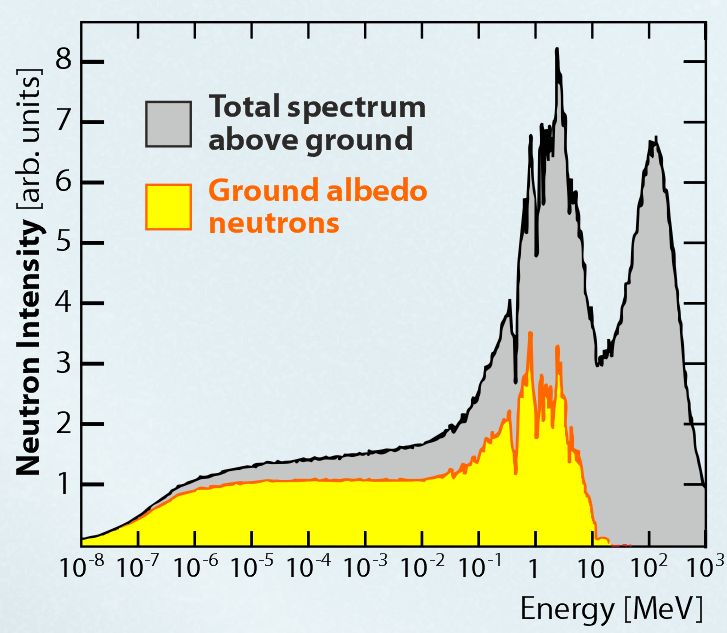 Soil Moisture Sensitivity
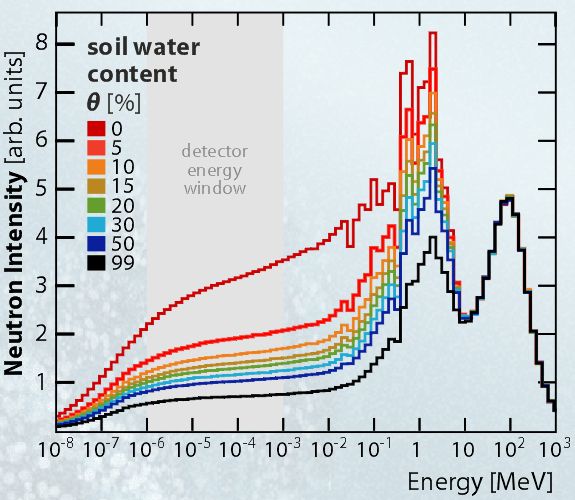 From high energy and nuclear physics to environmental sciences |
from dry regions more neutrons enter the detector than from wet ones |
Measurement Range
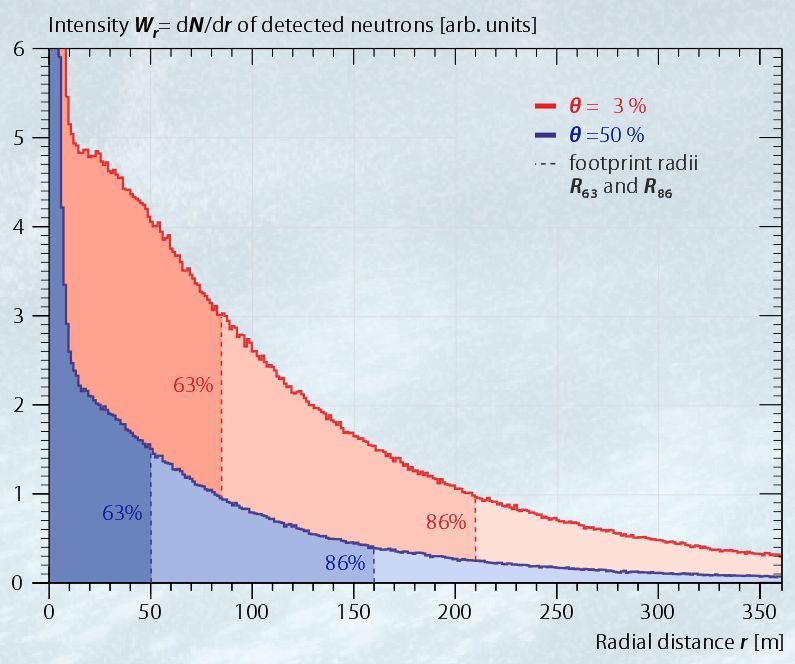 Detection
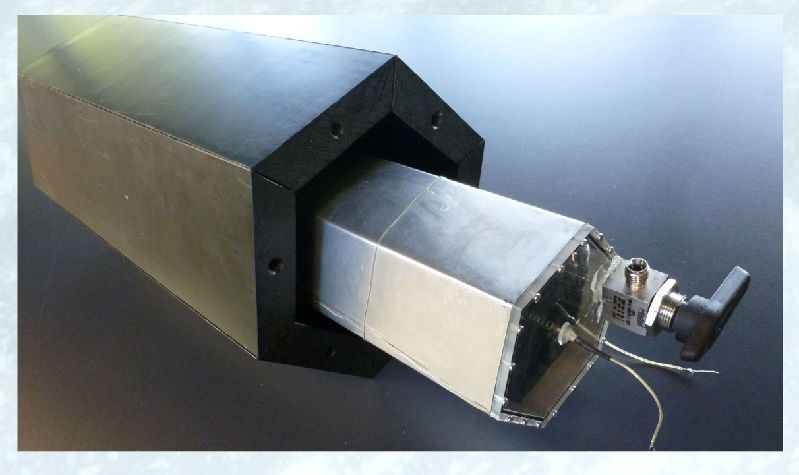 Suited for time resolved field-scale soil moisture determination |
Bachelor
and Master theses
available!

